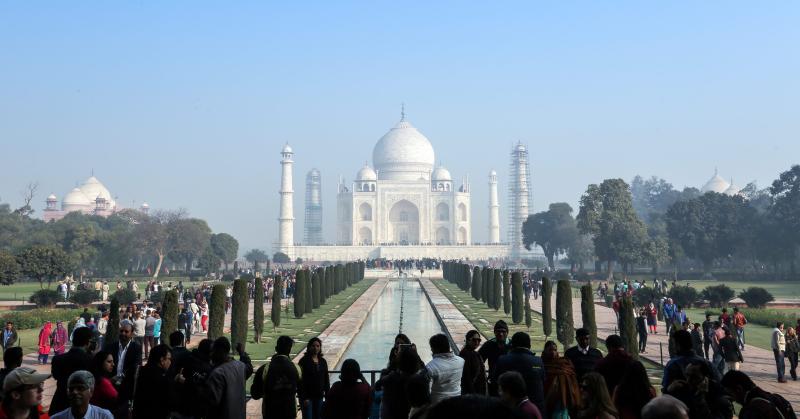See Tajmahal from the Vastu angle

By T. SELVA, Vastu Shastra Column
MOVED by its architecture and much talked about magnificence, I made a
trip to the Taj Mahal recently, a masterpiece of the world’s legacy.
It is dubbed as the most photographed monument of love and anyone
steep foot there will be mesmerised by its beauty and the peaceful
energy it exudes.
My recent visit to the integrated complex in Agra, India, was to
analyse the memorial from the Vasthu Sastra perspective because no
grave in the world can draw over four million visitors annually.
According to Vasthu practitioners in India, the Taj Mahal, one of the
Seven Wonders of the World, bears influences of the ancient science of
construction in its layout, design and placement of the building.
Built in 1632 by Mughal emperor Shah Jahan in memory of his third wife
Mumtaj Mahal, the magnificent white marble structure sits on a square
piece of land as recommended in Vasthu Sastra.
An awesome sight of grandeur welcomed me when I entered the main
entrance to the huge courtyard which was lined with trees and water
channels located in the West.
Taj Mahal has four grand entrances located in the four compass
directions of North, South, East and West. Each entrance measures 32m
high and was built with red sandstone.
The construction of the Taj Mahal took 22 years and this was marked by
the 22 small domes at the main entrance.
My tour guide Furqan Ahmad Ali was quick to point out that several key
aspects of the layout and design of the monument were in accordance
with the principles of Vasthu.
According to him, Taj Mahal is one of the finest examples of Mughal
architecture which combines elements of Persian and Indian styles. It
was designed by Ustad Isa Afandi of Persian Indian origin, before he
embraced Islam.
The land slopes towards the North and East which is an auspicious
feature in Vasthu; its length and width are exactly the same as its
height.
As I strolled through the Taj Gardens lined with flower beds,
fountains and running channels of water drawn from the Yamuna River, I
stopped to admire its natural beauty which has been preserved for
thousands of years.
The tomb was framed by four minarets, one at each corner of the
pedestal and reflecting pools.
For every hour of the day and for every weather condition, the Taj has
its own colour display, from the dreamy mood at dawn and the stunning
glow of whiteness at midday, to its romantic glitter in the moonlight.
I felt a strong energy overwhelming me as I queued and walked closer
and closer to the tomb.
Furqan stopped me in my tracks and prepared me to experience a sense
of contentment and achievement when walking into the large white dome.
He asked me to take a look at the entrance arch which was decorated
with messages of love and peace written in Arabic calligraphy, and
motifs of entwined flowers and leaves made by semi-precious stones
inlaid in the white marble.
The intricate, decorative themes are embedded with jade, crystal,
turquoise, lapis lazuli, sapphire, carnelian and other gemstones. This
decor was repeated on the translucent marble throughout the complex.
No photography was allowed and there was complete silence from the
crowd as we walked pass the graves of Empress Mumtaz Mahal and Emperor
Shah Jahan placed in the middle of the dome. They were buried along
the North-South axis ”“ an appropriate position for the departed.
The inner chamber was dimly lit. The air was still and I felt a chill
as I bowed and paid my respect.
Taj Mahal is a burial site but people who visited the grounds return
home feeling blessed that they have experienced something that words
cannot explain.
For many people, the Taj Mahal is a symbol of overwhelming love. It
sent a strong but subtle message on the importance of strengthening
bonds and relationships between loved ones.
Designated by Unesco as a heritage site in 1983, today the Taj Mahal
remains a source of admiration.
T. Selva is the author of the bestseller book titled Vasthu Sastra
Guide for peace, happiness and prosperity. To get a copy contact Devi
at 0412623017. He can be contacted at drtselvas@gmail.com Website:
www.vasthusastra.com
Short URL: https://indiandownunder.com.au/?p=13461
